Bees

Ask About Our
100% Eco-Friendly
Options
How to Get Rid of Bees In Central Wisconsin
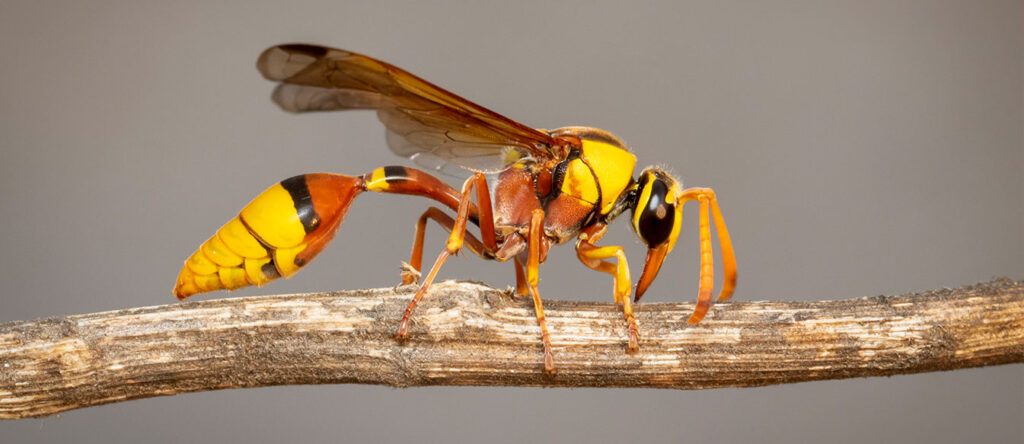
We all know that pollinators, like bees and wasps, are extremely important in the production of the majority of the fruits and vegetables we depend on. However, it, especially honeybees, have been experiencing a population decline. You may have seen in the news that bees are disappearing or that honey bees are endangered, and this is most likely caused by various factors, like insecticide exposure, diseases, and parasites. Large numbers of bees are lost every year, so it is important to understand what you can do to help bolster the pollinator population and save it from more devastating losses.
Common Threats to Bees
The biggest threat to bees is improper use of insecticides. All insecticides are dangerous to bees, but it doesn’t mean you have to stop using them. The key is to use them correctly, only when necessary, and with it in mind.
Here are some tips to keep in mind if you want to keep the bees safe:
- The most important thing to remember is to never apply insecticides to plants that have open blooms. It is okay to continue to use insecticides, but apply before the plants have bloomed or after the flowers have fallen off.
- They are most active on warm (above 70 degrees) sunny, and calm days between 8 am and 5 pm. They are least active when temperatures are cooler (below 60 degrees) and generally in the evening and very early morning, and this less active time period is the optimal time to apply insecticides.
- Avoid using a systemic insecticide on flowering plants.
- If you see bees actively foraging in specific areas of your yard or favoring certain plants, avoid applying insecticides near these areas. Only apply pesticides when necessary.
Frequently Asked Questions
Effective and humane ways to remove bees from your property may include using live bee removal techniques, such as bee vacuuming or relocation, as well as sealing any potential entry points to prevent bees from re-entering. It’s best to consult with a bee removal professional for the most effective treatment plan.
Bees play a crucial role in pollinating plants and maintaining healthy ecosystems.
Effective ways to attract bees to your garden may include planting native flowering plants, using pesticides sparingly, and providing a source of clean water.
To prevent bees from building a hive on your property, seal any potential entry points, keep your home and yard clean and free of debris, and use bee repellents or deterrents. It’s important to note that killing bees is not recommended and may have negative impacts on the environment.
Types of Bees
Stinging pests, including bees and wasps, come in a variety of shapes, sizes, and colors depending on their species. The common factor in these pests is a stinger and all of them can present problems for you or your home. Accurate identification is imperative in controlling stinging pests around your property. Some of the most common species found in Central Wisconsin are:
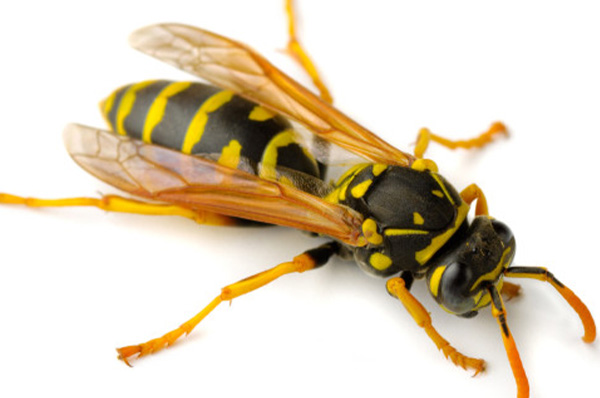
Paper Wasps
Paper wasps are 0.7 to 1.0 inch long wasps that gather fibers from dead wood and plant stems, which they mix with saliva and use to construct water-resistant nests made of gray or brown papery material. Paper wasps are also sometimes called umbrella wasps, due to the distinctive design of their nests. Unlike yellow jackets and hornets, which can be very aggressive, polistine paper wasps will generally only attack if they themselves or their nest are threatened. Since they are territoriality, it can lead to attacks on people, and because their stings are quite painful and can produce a potentially fatal anaphylactic reaction in some individuals, nests in human-inhabited areas may present an unacceptable hazard. Most wasps are beneficial in their natural habitat and are critically important in natural biocontrol. Paper wasps feed on nectar and other insects, including caterpillars, flies, and beetle larvae. Because they are a known pollinator and feed on known garden pests, paper wasps are often considered to be beneficial by gardeners.
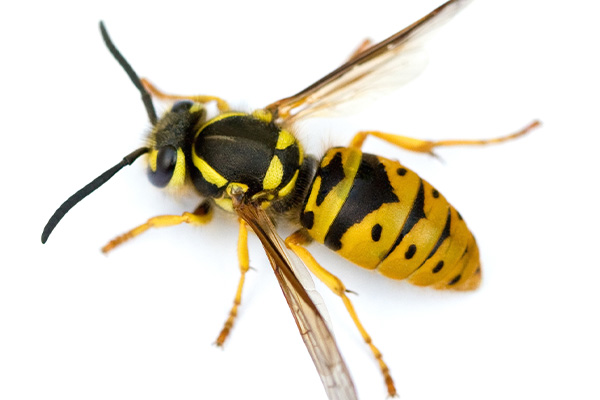
German Yellow Jackets
Yellow jackets are sometimes mistakenly called "bees" (as in "meat bees"), given that they are similar in size and appearance and both sting, but yellow jackets are actually wasps. They may be confused with other wasps, such as hornets and paper wasps. Polistes dominula, a species of paper wasp, is very frequently misidentified as a yellow jacket. A typical yellow jacket worker is about 0.5 in long, with alternating bands on the abdomen; the queen is larger, about 0.75 in long (the different patterns on their abdomens help separate various species). Workers are sometimes confused with honey bees, especially when flying in and out of their nests. Yellow jackets, in contrast to honey bees, are not covered with tan-brown dense hair on their bodies, they do not carry pollen, and do not have the flattened hairy hind legs used to carry it
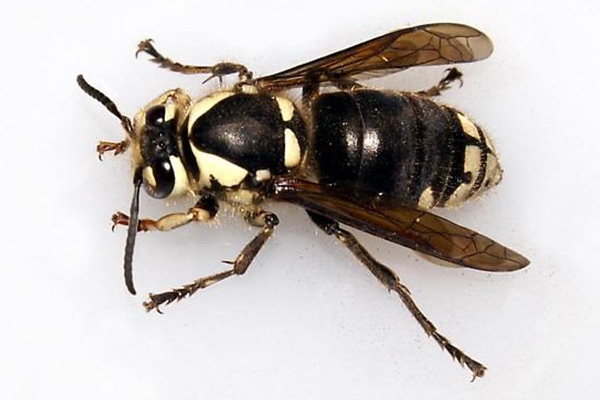
Bald Face Hornets
Bald-faced hornets are distinguished from other yellow jackets by their white and black coloring. It has a white or "baldfaced" head, which is the source of its namesake. These wasps also have three white stripes at the end of their bodies. They are notably larger than other species of Dolichovespula, as adults average about 0.75 inches in length. Queen and worker wasps have similar morphologies. However, workers are covered by small hairs while the queen remains hairless. Queens are always larger than workers in their colonies, though size distributions can vary in different nests, and workers in one colony might be as large as a queen in a different one.
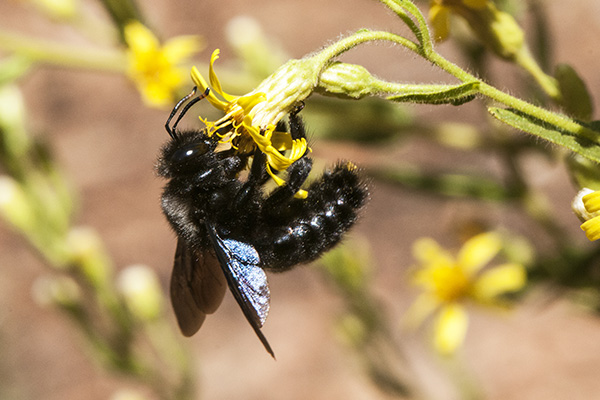
Carpenter Bee
Carpenter bees get their common name from their habit of boring into wood to make galleries to rear their young. These are worldwide in distribution, with seven species occurring in the United States. Carpenter Bees don't have a hive as honey bees but are solitary bees. The female Carpenter bee can get into small areas, boring holes.
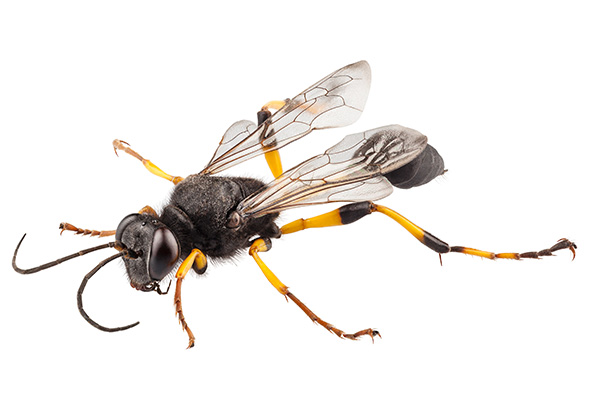


 Service Request
Service Request